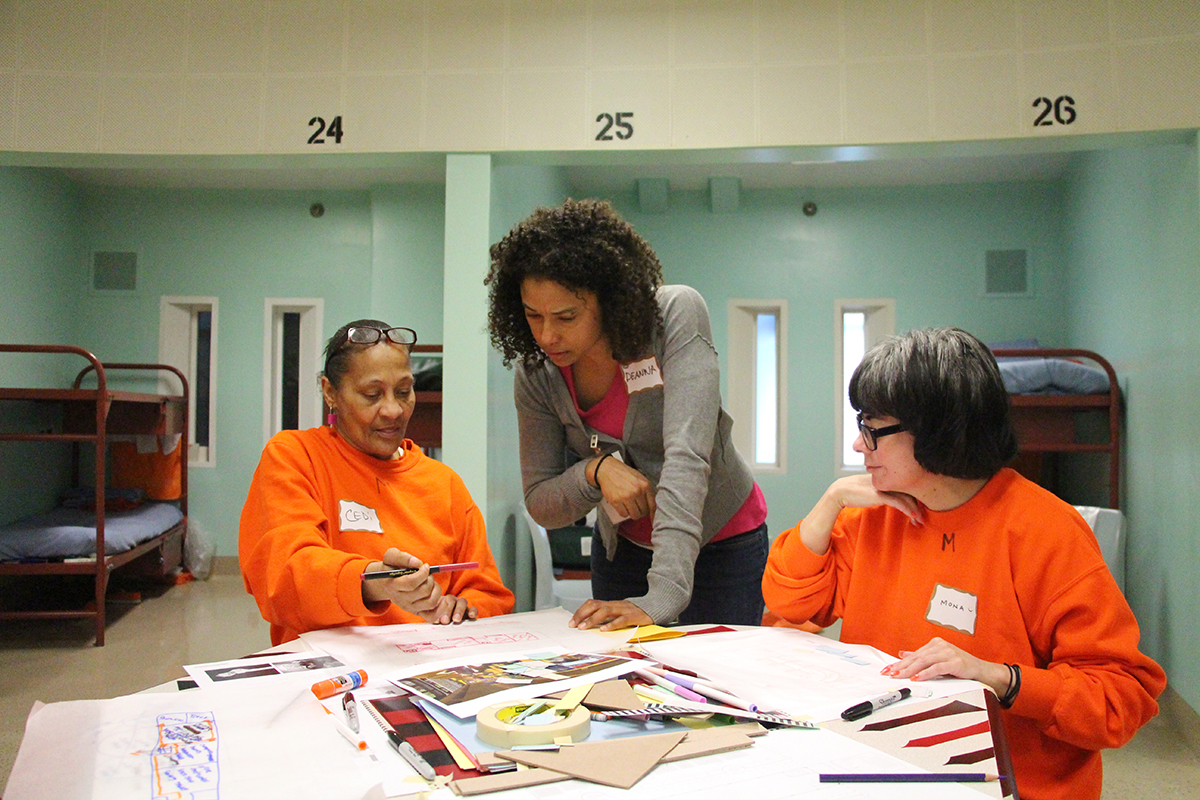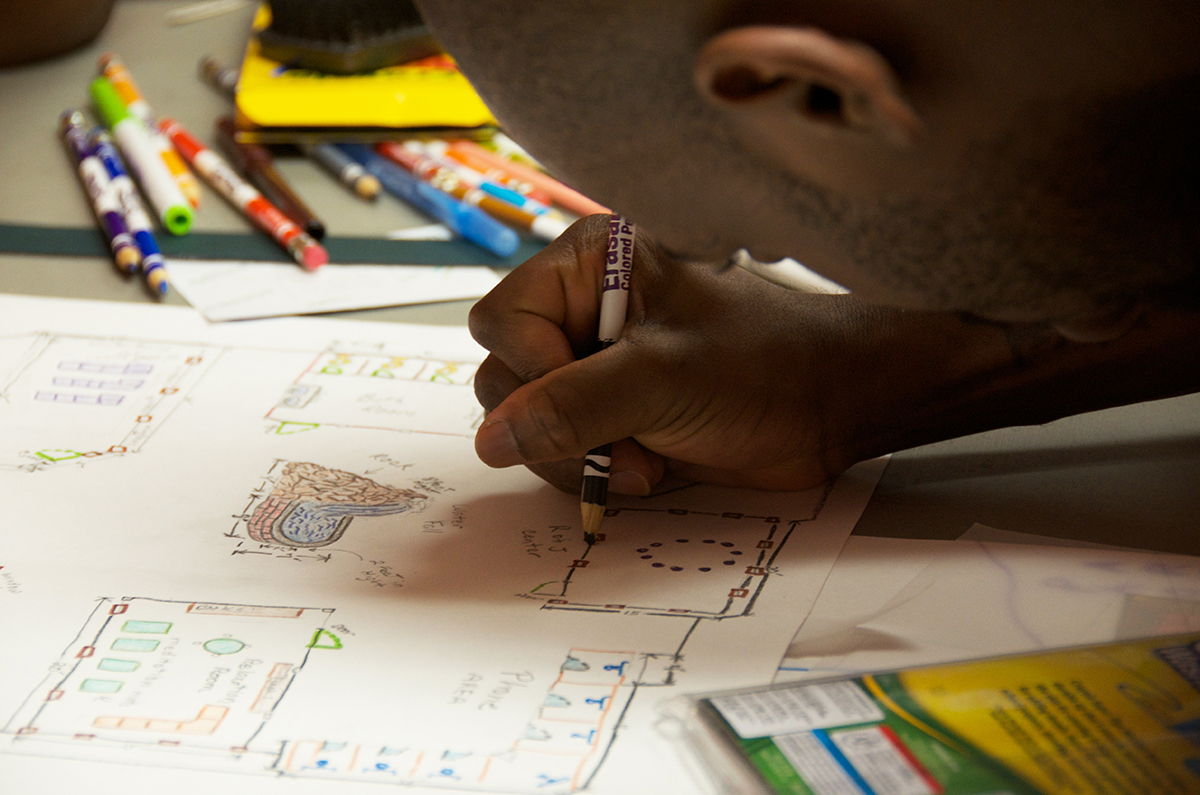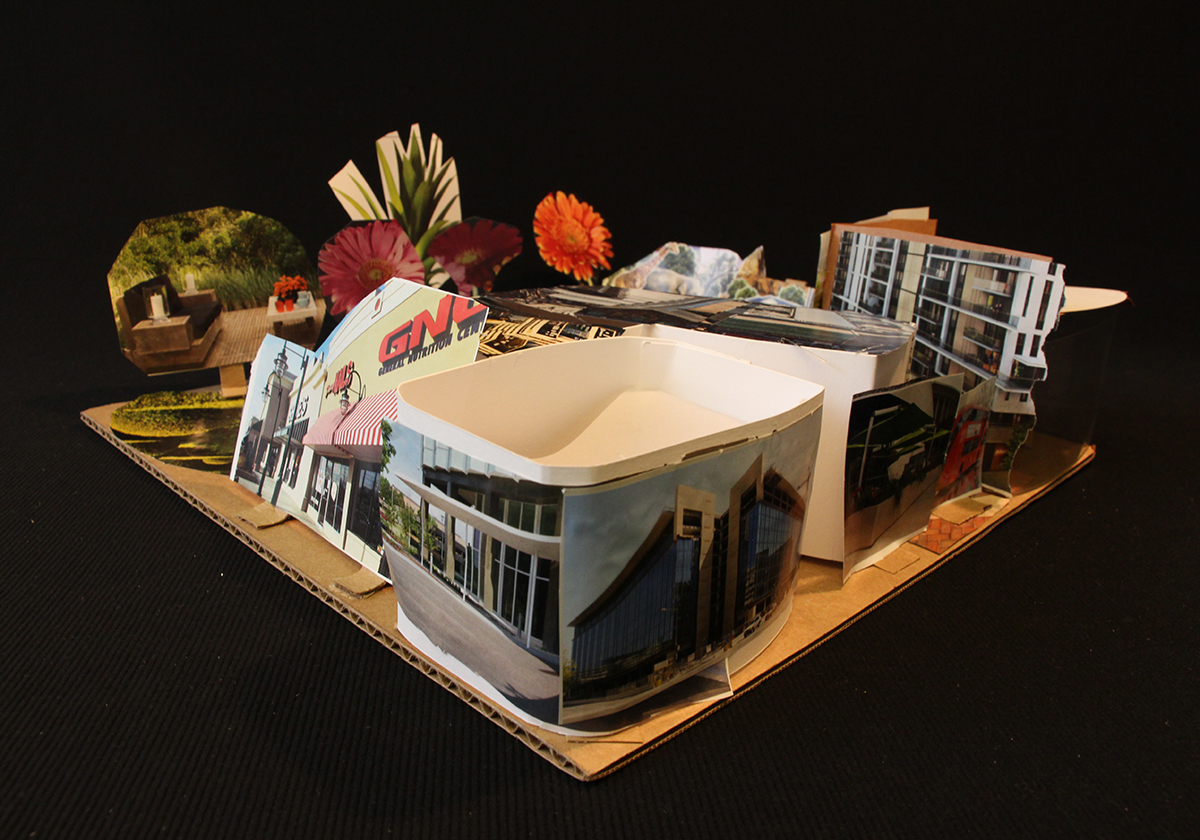
Model of a “Center for Rehabilitation,” created by Jaime, Shonte, Anthony, and Alvaro, Santa Rita Jail in Alameda County, California, 2014
In 2013, architectural designer Deanna Van Buren and social scientist Barb Toews established Designing Justice+Designing Spaces (DJ+DS) to facilitate the design of more restorative and healing criminal-justice environments through community engagement in jails and prisons. Their work is featured in the exhibition By the People: Designing a Better America, curated by Cynthia Smith, Curator of Socially Responsible Design at Cooper Hewitt.
Cynthia Smith (CS): Designing Justice+Designing Spaces (DJ+DS) is a unique partnership between a social scientist and architectural designer that explores how to design better correctional facilities and justice spaces based on the principles of restorative justice. What is restorative justice?
Barb Toews (BT) and Deanna van Buren (DV): Restorative justice is a philosophical approach to justice that is a departure from the criminal-justice system as we typically define and approach it. In short, restorative justice is a way to do justice that actively includes the people impacted by crime—victims, offenders, their families, and communities. Its goal is to do justice in a way that respects and restores each as individuals, repairs relationships, and contributes to the common good.
This approach to justice aims to achieve these goals by asking questions and relying on values different from those of the current criminal-justice system. Restorative justice aims to first find out who has been hurt and to understand the harms and needs resulting from the crime. Justice then involves asking who is responsible to attend to those needs and creating a process in which reparations can happen. As such, victims are active participants in the justice process, as are offenders as they learn about the impact of their actions and take steps to repair the damage.
CS: Deanna, your background and education is in architecture, most recently as a Loeb Fellow at Harvard’s Graduate School of Design. Why did you become interested in this area of restorative justice?
DV: I had been concerned for some time with the role that architects play in society. We were essentially in the service of the wealthy and powerful. I wanted to do something with my skills that would address pressing social issues. One I had been particularly concerned with was the prison industrial complex, but I was unsure of how architecture and design could address this very broken system. Then in 2006, on Martin Luther King Jr.’s birthday, I heard activist Dr. Fania Davis and her sister Dr. Angela Davis speak at the Allen Temple Baptist Church in east Oakland about restorative justice. I knew immediately that this was a solution and where I wanted to apply my desire to address social justice through design.
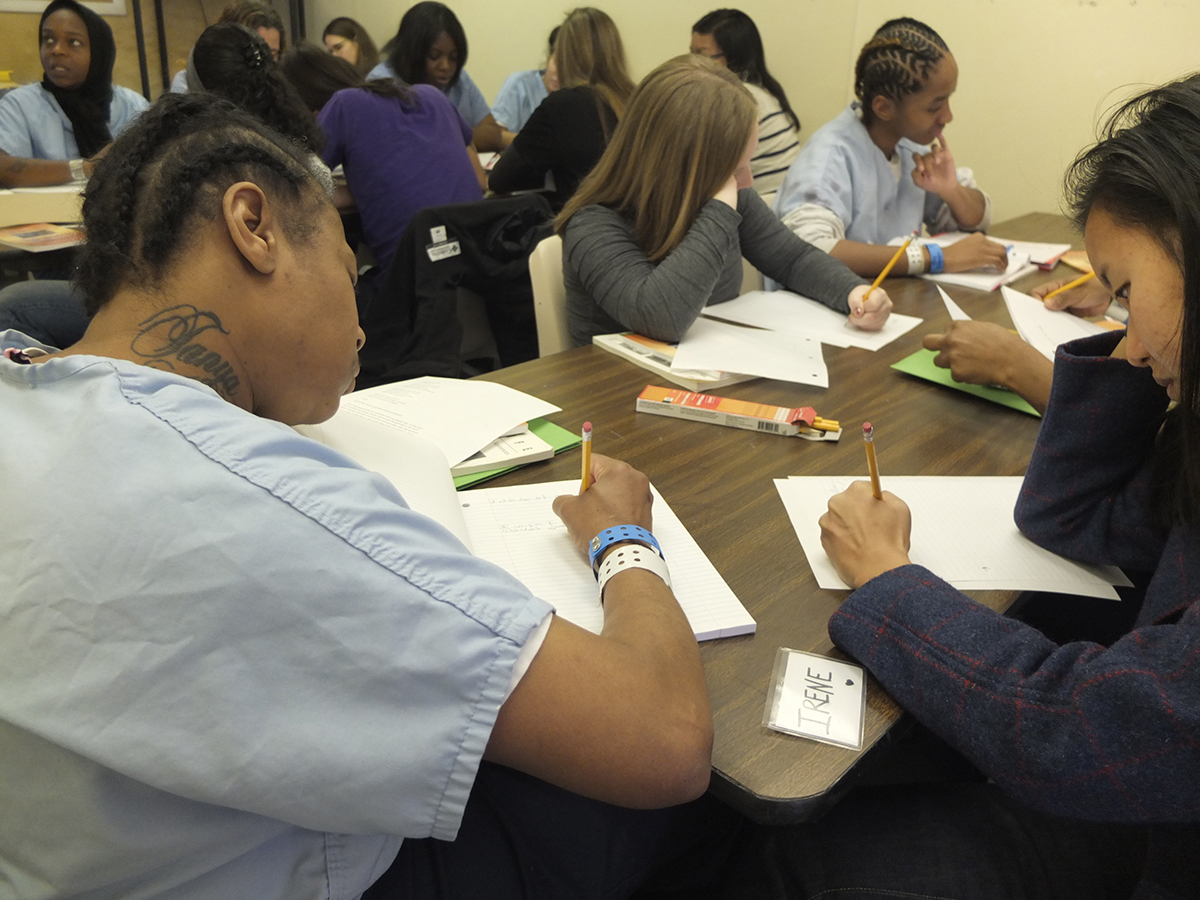
Six week Bryn Mawr College class taught by Barb Toews at the Cannery-Philadelphia Prison System in 2012 using art-based methods to engage various theories.
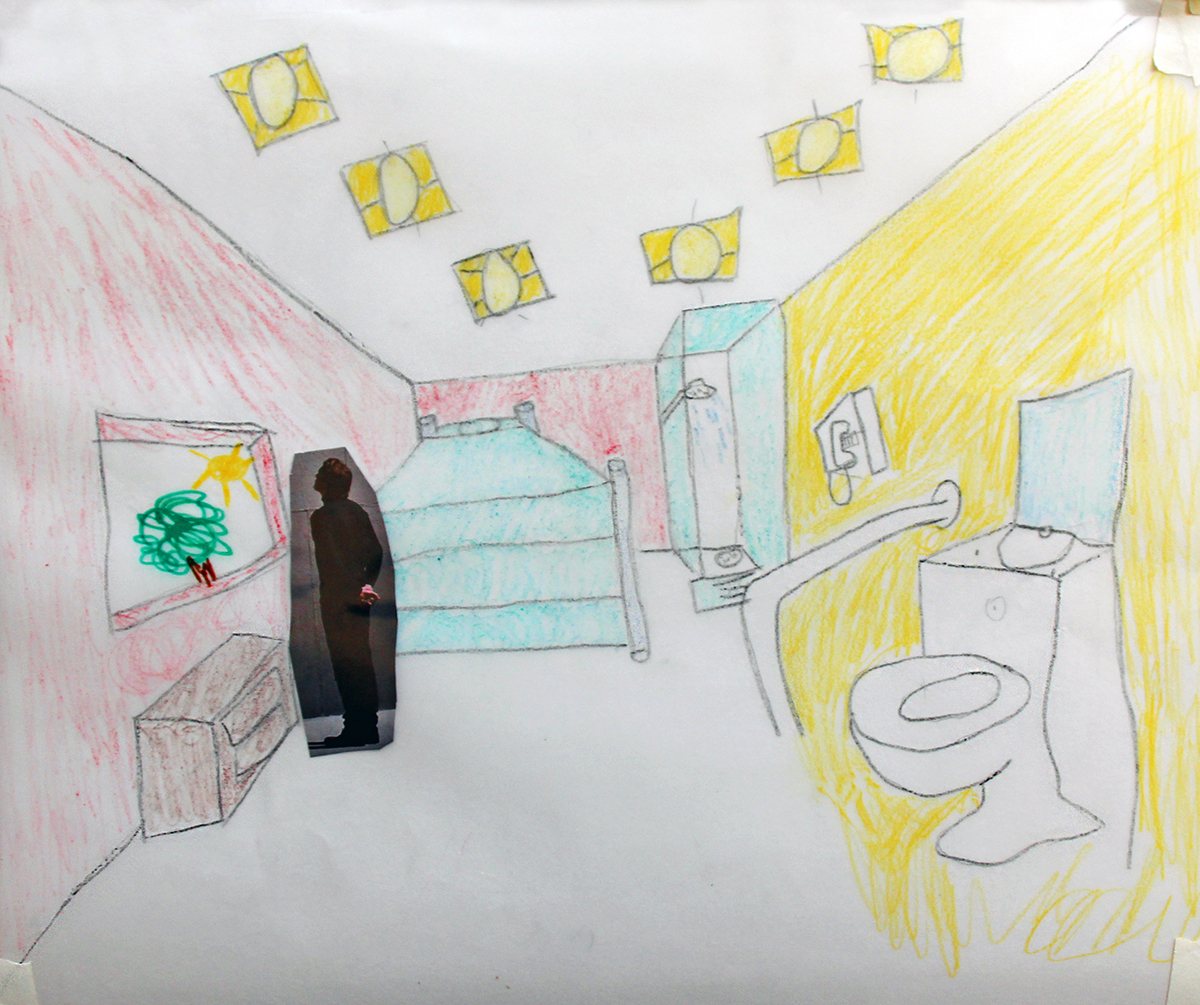
A perspective drawing of a redesigned cell entitled “Peace Within”, San Bruno Jail, San Francisco, California, 2014
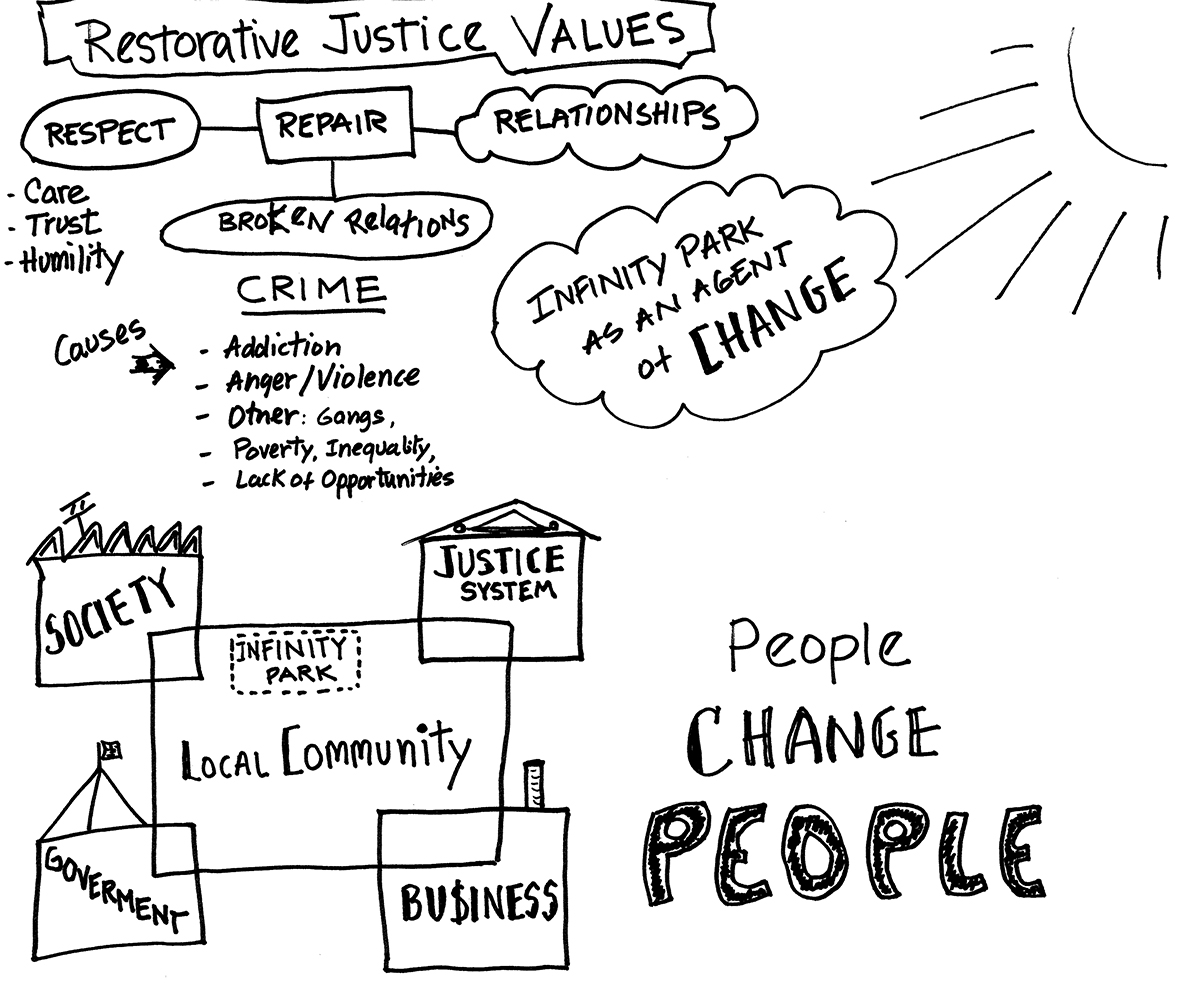
Diagram of the Restorative Justice Development Center, created by Curran, Gordon, Douglas, and Orlando, Santa Rita Jail, Santa Rita Jail, Alameda County, California, 2014
CS: Barb, you come out of the field of social work and criminal justice with a focus on restorative justice. Why did you become a restorative-justice practitioner?
BT: I fell into the field right out of my undergraduate degree, when I applied to do a few years of voluntary service after graduation. The sponsoring agency sent me a few job descriptions to choose from, and I chose the one to be volunteer coordinator for a victim-offender dialogue program in California. I knew nothing about restorative justice or victim-offender dialogue, but was intrigued by the opportunity to learn both administrative and facilitation skills. I knew my first week on the job that I had found my passion!
CS: DJ+DS asks, “What would justice buildings look like if accountability, healing, and transformation were the goal?” How would you answer the question?
BT & DV: From a design perspective, buildings that speak to accountability, healing, and transformation incorporate organic forms and integration with the natural world. Just look at the work of our students. Massing and scale are smaller addressing the body with a positive sensory experiences—sound, texture, smell, and light—that serve to de-escalate stress on the nervous system. Interior spaces look like homes, rather than institutions. Spaces designed with restorative justice in mind suggest a more giving, and inclusive environment than carceral spaces. Peace-making spaces are highly flexible to allow for a variety of experiences, includig relating or solitude, reflection or education, and physical activity or rest, or healthy food production and cooking.
CS: DJ+DS developed a toolkit to explore complex social issues, restorative justice, and design. What prompted you to create it?
BT & DV: Our first collaboration was to team-teach an undergraduate college class that explored restorative justice and the architecture and design of justice buildings. Deanna selected key design tools to use in the mini labs we did in this class—visual diaries, collage, perspective drawing and montage, and model-making with paper. Students received prompts each week to guide their visual diary work, and we discussed their ideas in class. They had prompts for their first collage—create a collage of images that represent what you would need in a restorative-justice space if you were one of the major stakeholders (victim, offender, or community). We discussed their individual collages as a group, exploring shared and divergent themes. With the introduction of each new design tool, we realized that the design labs gave students a new way to interact with the theory and practicalities of criminal and restorative justice and to communicate their ideas.
We were inspired by the designs of that first group of students and thrilled to have some preliminary answers to our questions about the intersection of restorative justice and design. Coupled with the experience of the design techniques serving as tools through which to learn theory, we believed others could be interested in this work and doing it themselves. Perhaps most importantly, we wanted incarcerated people to have access to the material. We applied for and received funding to continue these types of educational/design forums and create this toolkit.
With each workshop, we would add a new tool to try. By the end of the funding period, we had the ten tools that are in the toolkit. Each tool brings a unique way of engaging restorative justice and design.
CS: What is the format for a Designing from the Inside Out workshop? Does every workshop include a mini design lab? What might the participants design? What do you hope the participants will take from engaging in this work?
BT & DV: Workshops so far have been twelve to twenty hours in length. Regardless of length, all workshops include a mix of reading and discussion about restorative justice and mini design labs. The choice and number of tools used in those labs varies based on the workshop length. Participants start with individual work, and the workshop ends with participants working in teams to create their designs. They then present their designs to the rest of the participants and, in most cases, a panel of stakeholders, such as architects/designers, criminal justice/correctional program people, and local restorative-justice practitioners.
In other workshops, participants decide what they would like to design. This has led to design concepts for spaces in which victims and offenders can meet each other, a courthouse, healing centers, new types of jails, cells, and chow halls, prison visiting rooms, and community gathering spaces.
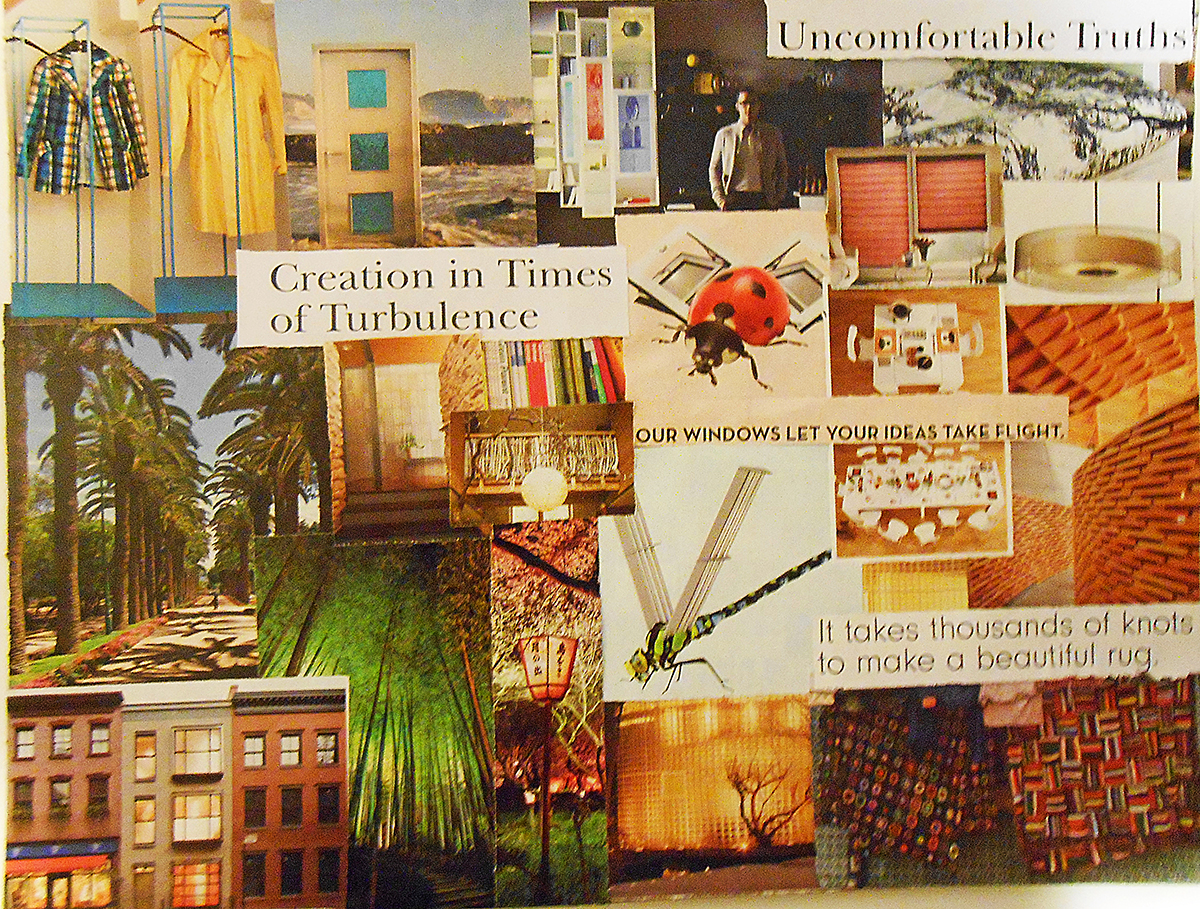
Collage representing a restorative justice process by Barb Toews, State Correctional Institution-Chester, Pennsylvania in 2013
This interview is excerpted from the book By the People: Designing a Better America, available through SHOP Cooper Hewitt.
